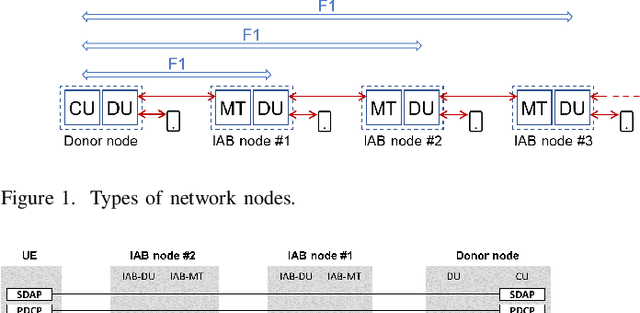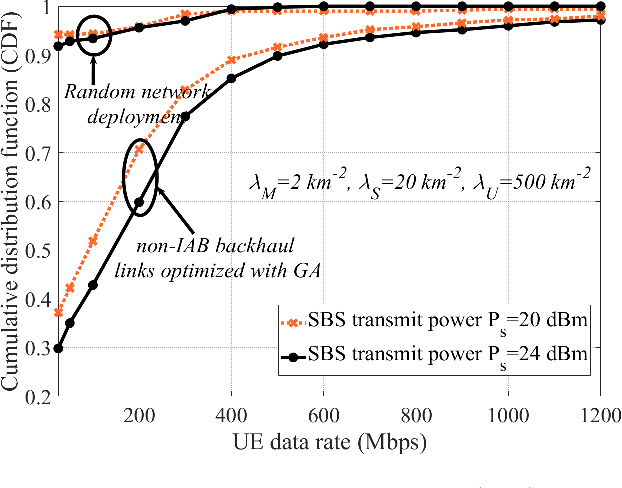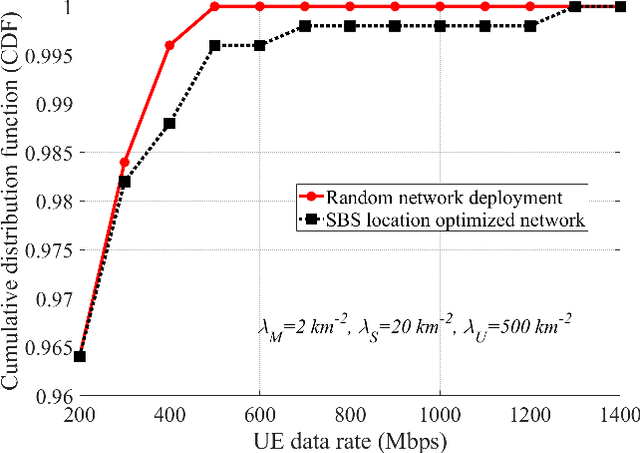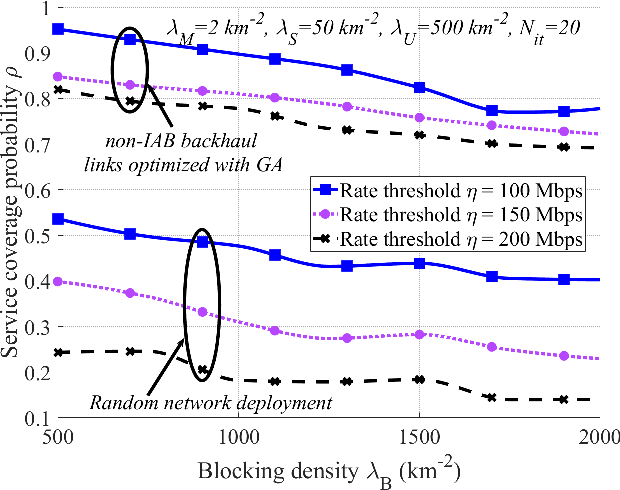On Topology Optimization and Routing in Integrated Access and Backhaul Networks: A Genetic Algorithm-based Approach
Paper and Code
Feb 14, 2021



In this paper, we study the problem of topology optimization and routing in integrated access and backhaul (IAB) networks, as one of the promising techniques for evolving 5G networks. We study the problem from different perspectives. We develop efficient genetic algorithm-based schemes for both IAB node placement and non-IAB backhaul link distribution, and evaluate the effect of routing on bypassing temporal blockages. Here, concentrating on millimeter wave-based communications, we study the service coverage probability, defined as the probability of the event that the user equipments' (UEs) minimum rate requirements are satisfied. Moreover, we study the effect of different parameters such as the antenna gain, blockage and tree foliage on the system performance. Finally, we summarize the recent Rel-16 as well as the upcoming Rel-17 3GPP discussions on routing in IAB networks, and discuss the main challenges for enabling mesh-based IAB networks. As we show, with a proper network topology, IAB is an attractive approach to enable the network densification required by 5G and beyond.
 Add to Chrome
Add to Chrome Add to Firefox
Add to Firefox Add to Edge
Add to Edge